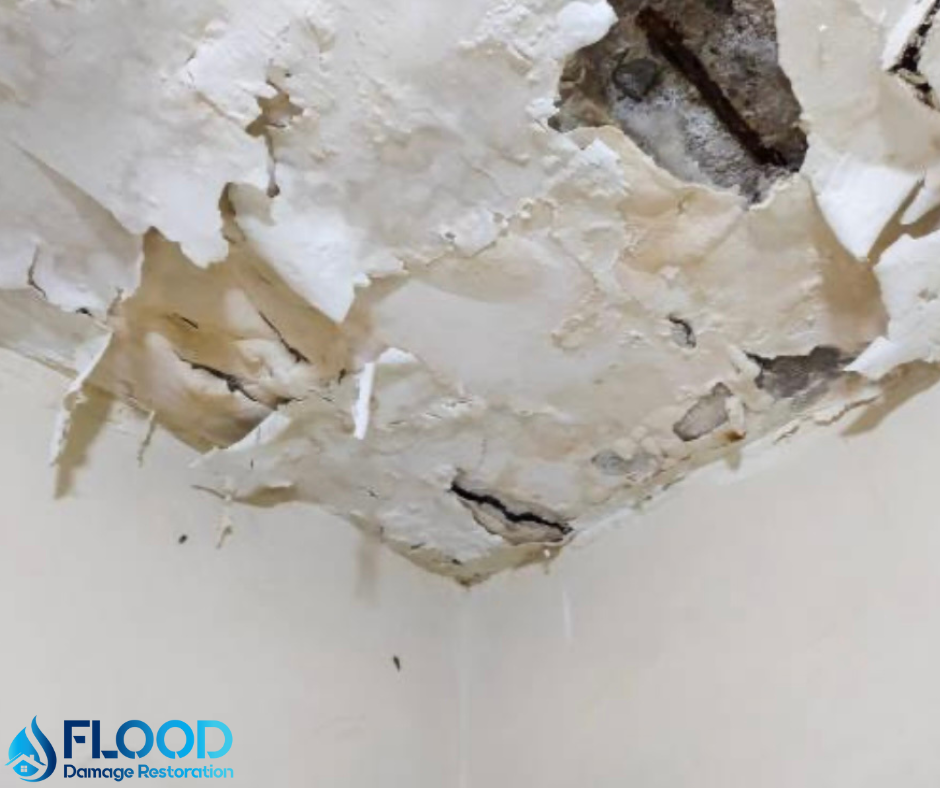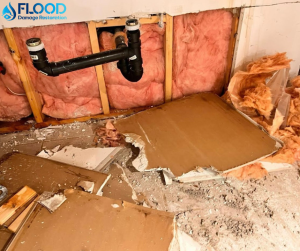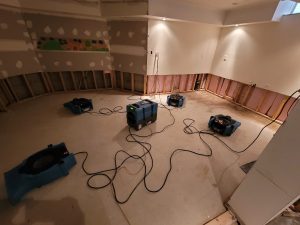
Flooding has become an increasingly significant concern for homeowners, particularly those residing in North York, where its impact can range from minor water damage to severe structural issues. Understanding, preparing for, and mitigating flooding risks cannot be overstated. The negative effects, including the destruction of property, loss of valuables, and potential health hazards due to waterborne pathogens or mold, highlight the critical need for effective flood prevention measures. Moreover, basement flooding, sewage backup, and flooded basements have underscored the vulnerability of residential areas to such calamities, emphasizing the need for strategic interventions to prevent flood damage.
This guide aims to navigate homeowners through various strategies and measures to effectively guard their homes against flood waters. From initial steps in basement waterproofing to drainage and drain cleaning essentials, it covers a comprehensive range of preventive measures to stop flood water damage. Furthermore, the article will investigate emergency measures during heavy rain, including sump pump repair, drain repair, and handling leaky basements. Through a detailed exploration of these topics, the guide seeks to equip homeowners with the knowledge and tools for effective flood prevention to minimize the risks and impact of flooding near them.
Understanding the Causes of Flooding
Common Sources of Household Flooding
- Overloaded Sewer Systems: During heavy rain, sewer systems can become overwhelmed, increasing pressure and causing water to go back into basements. This phenomenon, known as sewer backup or sewer surcharge, often occurs in areas with combined sewer systems, leading to significant water intrusion issues.
- Inadequate Drainage: Poor drainage systems, including clogged gutters and inadequate landscaping, can direct water toward homes rather than away from them, leading to overland flooding. Implementing measures like downspout disconnection can significantly mitigate this risk by redirecting water flow away from the property.
- Infrastructure Failures: Burst pipes, malfunctioning appliances, and broken water heaters are common culprits that lead to significant indoor flooding, necessitating prompt flood restoration efforts to mitigate flood damage and restore affected areas.
- Foundation Issues: Cracks or flaws in a home’s foundation can allow water to seep in, exacerbating the risk during heavy rainfall or floods. Addressing these issues through foundation drain repairs and installing weeping tiles can significantly reduce water intrusion.
Specific Flooding Challenges in North York, Toronto
- Sewer System Limitations: The existing sewer systems and overland drainage routes in North York often cannot handle the volume of stormwater during significant rain events, leading to frequent basement flooding and sewer backup. Strategic interventions are essential to address these vulnerabilities.
- Environmental Assessments and Improvements: Long-term projects are underway to enhance the capacity of these systems through Environmental Assessment studies and subsequent upgrades, such as larger storm sewers and improved drainage facilities, aiming to alleviate the chronic issue of basement flooding.
- Localized Flooding Risks: Certain areas, particularly around the Markham industrial cluster and Don Mills Channel, face recurrent flooding due to inadequate channel and culvert capacities. These areas have been identified for interventions to enhance flood safety and mitigate flooding risks.
Preventive Measures to Stop Flood Water
Installation of Backwater Valves and Sump Pumps
- Subsidy and Installation: Homeowners can apply for up to $3,400 subsidy through the Basement Flooding Protection Program to install flood protection devices such as backwater valves and sump pumps. This subsidy, which covers up to 80% of the invoiced cost, including labour, materials, and taxes, is part of the City of Toronto’s efforts to encourage residents to take proactive steps towards flood prevention, including the City of Toronto backwater valve rebate and the City of Toronto sump pump rebate.
- Function and Maintenance: Backwater valves prevent sewage or floodwater from backing into the house. Maintaining these backwater valves and ensuring they are regularly inspected is crucial. Sump pumps remove water that enters the house, reducing flood risk. They should be installed where they can effectively pump water away from the foundation.
Proper Maintenance of Eavestroughs and Downspouts
- Regular Cleaning: Gutters and downspouts should be cleaned thrice yearly to prevent clogs from leaves, ice, or debris. This maintenance prevents water from spilling over and seeping into the foundation, which can lead to flooding. Consider downspout disconnection to further reduce the risk of water damage.
- Correct Installation and Repair: Ensure gutters have the correct pitch, directing water to downspouts and not towards the foundation. Extensions should be added to downspouts to direct water at least 6-10 feet from the house. If damage is detected, prompt repair or replacement is necessary to maintain functionality.
Sealing Cracks and Openings
- Use of Flood Protection Liquid: Apply Flood Protection Liquid to seal any small pinholes or cracks in the foundation or walls. This liquid can be brushed, rolled, or poured directly onto the surface and used as a final layer of basement waterproofing protection.
- Application Steps: Ensure the area is clean and dry before application. Apply several even coats, allowing each to dry before applying the next. This method ensures that all potential entry points for water are securely sealed, providing robust protection against flooding.
Emergency Measures During Heavy Rain
Immediate Actions to Take During Flooding
- Clear Storm Drains and Gutters: Ensure your property’s city gutters and storm drains are free from leaves, garbage, and other debris to prevent blockages during rainstorms. This is crucial as it can take hours for city crews to address these blockages during heavy rains, especially in the storm sewer system.
- Shut Off Electrical Power: Contact your local utility provider to shut off power if water has risen near outlets or the electrical panel to prevent shock or electrocution. This is an essential flood safety measure.
- Avoid Using Drains and Toilets: If flooding is suspected to be from a sewer backup, avoid using toilets and sinks to prevent further backflow into your home.
- Health and Safety Precautions: If your basement floods, wear protective clothing—rubber boots, gloves, and eye protection—and avoid contact with potentially contaminated water. Effective flood cleanup and flood restoration practices are crucial for safety.
Essential Products and Tools for Flood Prevention
- Water Inflated Property Barrier (WIPP): Consider using WIPP, a durable vinyl-coated polyester barrier quickly inflated with water to protect against floodwaters. This flood guard can provide an additional layer of protection for your property.
- Automatic Pop-Up Flood Barriers: Install DENIOS Pop-Up Flood Barriers that automatically deploy upon contact with water, providing a watertight seal similar to a flood gate valve.
- Flood Protection Products: Use Flood Protection Paste and Liquid on doors, windows, and other potential entry points as a base coat, followed by additional layers for enhanced basement waterproofing.
- Sandbags Alternative: Modern solutions like FloodBlock or Quick Dams are more effective and easier to deploy than traditional sandbags for immediate flood defence. They ensure better flood safety and act as reliable flood guards.

Conclusion
Throughout this guide, we navigated the complexities of flood prevention in North York, outlining essential steps for homeowners to protect their properties from the adverse effects of flooding. By emphasizing the importance of understanding the causes of flooding, from overloaded sewer systems to inadequate drainage, and providing actionable strategies like installing backwater valves and maintaining eavestroughs, this article equips residents with the necessary knowledge to minimize basement flooding risks. The discussion further highlighted specific challenges within the North York area, offering targeted solutions and emergency measures to safeguard homes during severe weather conditions.
As we conclude, it’s clear that proactive measures and routine maintenance are fundamental in averting the potentially devastating impact of floodwaters on our homes and well-being. While the guide has addressed several preventive actions and emergency responses to counteract flooding, continuous learning and adaptation to new strategies will further enhance our defences against these natural occurrences. The significance of being prepared cannot be overstated, and as a community, embracing these practices ensures not only the safety of our properties but also the preservation of our quality of life amidst the unpredictability of nature, emphasizing the importance of flood prevention and flood safety.
Contact Us
- If you’re facing water damage and need professional help, don’t hesitate to Flood Damage Restoration.
- Emergency Hotline: (416) 648-2895
- Email: [email protected] We’re available 24/7 and have a 1-hour response time. We’re here to help you through this challenging time and ensure your home or business is clean, safe, and dry as soon as possible.
- Remember, a quick response is key when it comes to water damage. Don’t wait, call us today!



